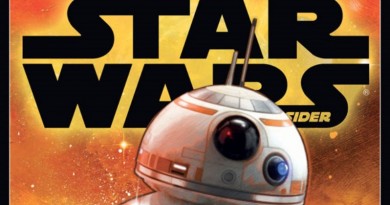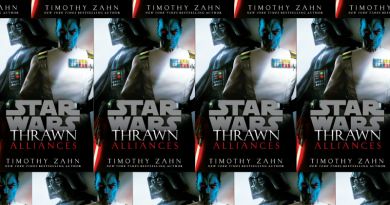The Last Jedi: Lessons Learned On Representing Women in Star Wars, Part One
When it comes to representation of women on screen, the Star Wars films of the Kathleen Kennedy era have had a rocky start. The reveal of Episode VII’s first cast photo and cast list could not avoid discussion of its stark gender disparity. The theatrical release of The Force Awakens fared a bit better after gender-swapping Captain Phasma, but Rey’s story was one with the featured and prominent supporting roles filled mostly with men.
The Rogue One experience for many of the female contributors of FANgirl Blog was even more disheartening. Jyn Erso wasn’t the fiery upstart who said “I rebel” to the Alliance leadership in the trailers, but rather a passenger in a dynastic story about the Death Star: she ultimately fulfills her father’s wishes, and not any of her own that are established as independently motivated from his. Lyra Erso, her mother, dies in a suicidal confrontation with Director Krennic to save her husband. Mon Mothma too is a passive character, leaving all the agency, choice, and consequences to the men that make up her inner circle. Although it is named after the team that makes a stand and thus puts wind in the Rebel Alliance’s sails, Rogue One focuses on giving Krennic and his conflict with his superior in the Empire, Grand Moff Tarkin, clear motivations in the Death Star project. While the Rebel front characters are diverse, they all die. Everywhere on screen white men appear, despite the fact that ancillary materials have included more diversity in both the Alliance and the Empire. Even though the prequel novel Catalyst establishes diversity in the engineers and scientists tasked with creating the Death Star technology, when it comes time to show a team of engineers on screen, they are all older white men.
The Last Jedi, on the other hand, finally normalizes women on screen. Here are some of the ways it accomplished that, and a few lessons learned as Star Wars forges forward.
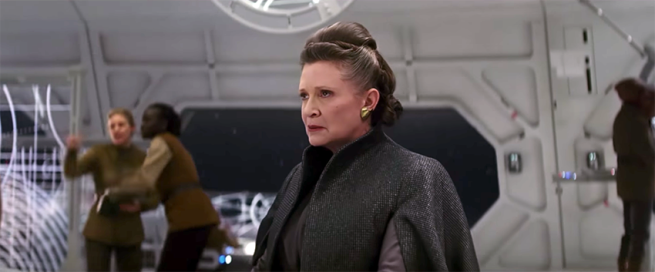
1) Women Warriors
It is a myth larger than Luke Skywalker’s that women don’t fight in wars. Kameron Hurley’s Hugo Award-winning essay “We Have Always Fought” challenged the notion that women aren’t essential to rebellions in our own global history. Star Wars is a fantasy that can imagine any possibility, but seems at times chained to the patriarchal vision of the white male savior that persists in Hollywood, even The Last Jedi ends on that trope. Men of color aren’t immune to this erasure, either; the critically acclaimed Dunkirk erases Africans and Indians who were critical to the World War II campaign.
The middle-aged women who join General Leia on the bridge of the Raddus in The Last Jedi represent the women who had fought alongside Admiral Ackbar, Mon Mothma and Bail Organa in the Rebel Alliance days. This is where Rogue One is disconnected from Episode VIII, particularly considering we know now that the movies were developed in tandem. Vice Admiral Amilyn Holdo, who has a reputation whispered about among the younger hotshots like Poe Dameron and C’ai Threnalli as she takes command after Leia is knocked out of the fight, is clearly a veteran. So is Commander D’Arcy, who knows the specifics of what is available to the Resistance on Crait. We meet technician Rose Tico, gunner Paige Tico, A-wing commander Tallie Lintra, and also the unnamed women who fly the ski speeders out to meet the First Order assault force on Crait.
Women aren’t only good guys, but also show up in a variety of roles within the First Order hierarchy. The Praetorian Guard, though, is one place that jumps out as lacking imagination in representing women warriors.
2) Mentors
While Felicity Jones hinted at the possibility of Mon Mothma being a mentor to Jyn Erso, that never materialized on screen, or maybe fandom misconstrued the statement. It’s difficult even to infer that Jyn admired the Rebel leader, given what transpires in the movie. The Last Jedi puts Leia in a mentor role, even creating visuals with her costume that are a direct nod to Yoda. Leia guides Poe and Finn over the course of the film. Her impact on Rey reverberates particularly in the younger woman’s persistence to bring Luke back, insisting to the hermit that his sister is owed an explanation if he chooses to not return. Subtext exists that Leia could be prodding Rey toward Kylo, as well, possibly understanding from her failure in asking Han to retrieve their son that Ben can’t be reached by his elders but rather by a peer.

3) Epic Heroes
Although some might see Amilyn Holdo as a Mentor to Poe, she acts more like a Shapeshifter in the framing of his story. In the galaxy far far away, Luke Skywalker is the name that exists in legends and inspires others. Luke’s conquest of the Death Star motivates the hotshot pilot as he drives against the dreadnought in the opening act. What Poe doesn’t realize as he faces off against Holdo is that the hardest part of heroism are the acts that go unseen – such as Luke’s refusal to fight Darth Vader on the second Death Star. Holdo makes the ultimate sacrifice in the moment Poe’s eyes are opened to the idea that individuals make up the Resistance, not warships or the weapons and shields those vessels possess. For more on real life women who resisted with this same mindset, check out Adjua Adama’s discussion of the parallels to African Queen Njinga Mbandi’s strategies for resistance on the latest episode of Fangirls Going Rogue. Holdo’s sacrifice will live forever in the hearts and minds of the Resistance, as it will in Star Wars lore.
4) Lady Friends
In one of the most poignant scenes of the movie, Leia and Amilyn’s friendship is revealed when the general gives the vice admiral permission to stay behind with the Raddus. This scene is notable both in that women are rarely portrayed as the stoic captain of a doomed ship, and that female friendships in Star Wars don’t exist to drive story points in the films. Attack of the Clones gives glimpses of a friendship between Padmé and Dormé, notably in a scene where they bid each other farewell, but Padmé appears to isolate herself by the time Revenge of the Sith rolls around – or possibly they were forgotten as Lucas had other pressing points he needed to make about Anakin Skywalker’s tragic fall to the dark side. While Amilyn notes that Leia has taught her how to make it through loss, the Star Wars Legends stories are a cautionary tale of putting women in positions where they bear any hardship over and over without bending. Leia is formidable, but she is also a human being. Men generally view women through their mothers, who often shield men from their personal failings or hardships, and this representation of Leia as an unflagging rock can begin to ring hollow with female fans as it did during the Legacy of the Force and Fate of the Jedi series. Notably, Claudia Gray’s depiction of Leia in Bloodlines allows symptoms of depression to seep in to the character. If you want to take some subtext from Gray’s second Leia-centric novel, Leia: Princess of Alderaan, Holdo’s farewell ramps up the stakes as some fans see more than friendship from Amilyn toward Leia, but also unrequited love. Notably, Rey is the only female character in this movie who goes through an arc. All the others are who they are – Rose the angel, Leia the visionary mentor, Holdo the inscrutable veteran – within the context of the story.
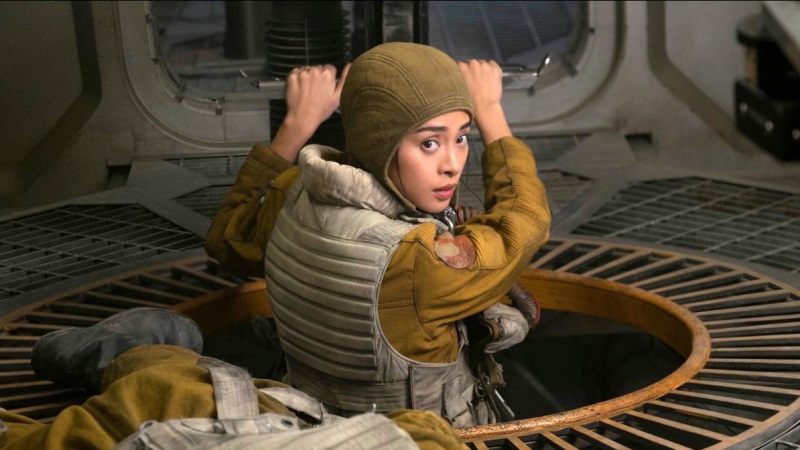
5) Sisters
We don’t see Paige and Rose Tico together on screen, but family has been represented from a man’s perspective in the Star Wars films. In the Original Trilogy, Leia is the sister to the central male character and the overarching dynamic is that between a father and a son. The takeaway from the Tico sisters is that if women start populating equivalent roles, then mothers, aunts, sisters, and lady friends stop being an exception. While we don’t receive tons of information about their relationship, the impression is that these two women drew strength from each other.
The way it has told stories about family is another way Star Wars lacks balance. Overall, the franchise tends to veer toward toxic family relationships and strives to create the drama from the family dynamic. While this is a long-standing way myth derives its conflict, it can also undermine potential to forge new types of stories. For instance, Claudia Gray’s Bloodline does a good job of showing Han and Leia in a healthy relationship while simultaneously following their own personal ambitions and respecting each other’s space. Gray’s novel Leia: Princess of Alderaan shows Bail and Breha Organa at odds over how to overthrow the Emperor but united as a family. Over the course of the Legends run, we criticized the story design (created mostly by men) that hamstrung Leia and Han, and Luke and Mara at times, by needing to portray married couples as together at all times, the same justification given for stalling the marriage of Jaina and Jag. The Force Awakens relies on a similar portrayal, using the notion that Leia and Han had to be apart and thus were separated as husband and wife for tragic effect. Han’s death hurts Leia, but the plot of the movie effectively mourns the loss of their relationship before Han and Leia reunite. Kylo Ren slaying Han Solo when his parents were still finding strength in each other as a power couple would have impacted Leia even more in Episode VII. If Star Wars wants to be subversive, it needs to think about how it creates drama and also how it portrays working women, who aren’t given the same pass for choosing a career as men. The story of Cobalt Squadron, two sisters who were united in their quest to bring down the First Order, makes Paige’s death all the more poignant.
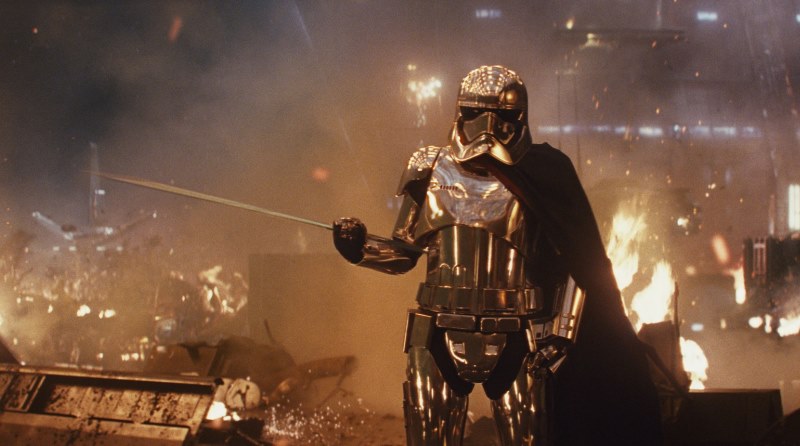
6) Masked Antagonist
Until now, Boba Fett was the most over-anticipated character behind a mask in Star Wars. Enter Captain Phasma, who sparked similar interest before The Force Awakens hit the silver screen. Fett died ignominiously in Return of the Jedi. (If he didn’t die then, what they heck was Luke Skywalker worried about on that plank?) It’s awesome that a female character can rise to Fett’s level, enough so that she made a return in a second film. May her “chrome dome” stylized geek chic live forever and stories continue to be written about her.
7) Just Say No
Although Maz’s small role in The Last Jedi is likely more a plot contrivance, her words and Lupita Nyong’o’s delivery suggest a woman who knows her own worth in two ways. First, Maz is smart, informed, and Force-powerful, but she resists the urge to drop everything to save the day for the allies contacting her. Women struggle with this regularly. We find it hard to refuse our friends and forsake our own lives. Maz reminds us it’s okay to say no and focus on your own problems, union dispute or otherwise. That might be a lesson the old Jedi Order could have stood to learn when offered the role of generals to the clones. Second, in talking about the Master Codebreaker, Maz pays him a few compliments, including the innuendo that he pleases her personally. Maz’s brief appearance acknowledges that women deserve sexual gratification, and they didn’t even need to put a man in a scanty slave outfit or have a space-lion bare the hero’s midriff to do it.
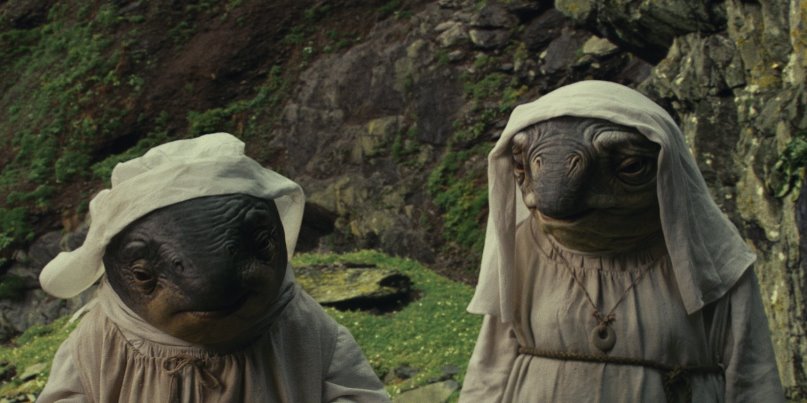
8) Space-Nun Lesbians
The Art of The Last Jedi reveals a scene in the Caretaker village where Luke teaches Rey the third lesson mentioned when he agrees to train her. The omission of this scene, which featured a hetero-normative imagining of the creatures known as Lanai, from the final cut of the film presents an opportunity for the franchise to adopt instead a fandom interpretation that there are only female Caretakers living and working together to look after the Jedi ruins. Rian Johnson’s intent wasn’t space-nun lesbians, but making a change when a suitable opportunity presents itself can be a step toward acknowledging that Star Wars really is for everyone.
9) Angry Women
One of the things Carrie Fisher noted about her characterization in original trilogy was that story intentionally softens her in Return of the Jedi. During most of The Force Awakens, Rey is bright and optimistic, but by the time she fights Kylo Ren the young heroine channels some rage. Where Leia’s anger simmers below the surface, Rey radiates it. With the deliberate attempt to represent the Yin-Yang dynamic between Rey and Kylo, each character will possess in small amounts the traits that dominate their opposite. We see glimpses of vulnerability and compassion in Kylo when he reaches out to her in the hut, and anger and resentment in Rey when she fights beside him against the Praetorian Guard. Her battle against Luke in the rain drives home the point that Rey has the one thing Kylo does not: control.
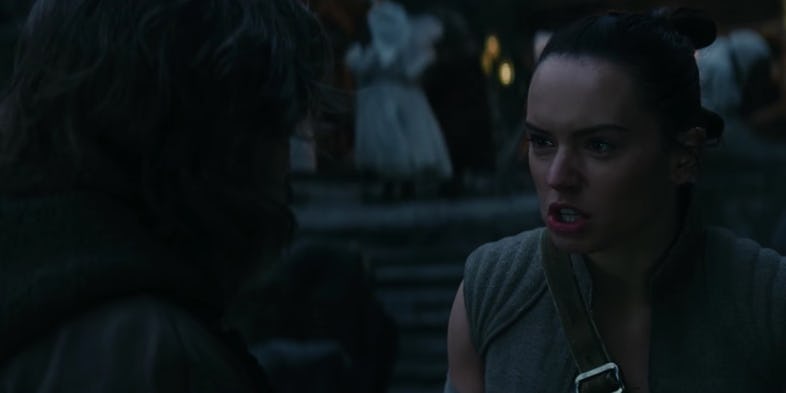
Interestingly enough, The Star Wars Show revealed yesterday footage from Rey’s third lesson. Rey is mad at Luke, which might have dovetailed nicely into her confrontation of the Jedi Master after connecting with Kylo in the hut. Based on the summary at /Film, the scene was deleted to protect Luke’s esteem in the eyes of the audience – functionally the same reason why Padmé was left dying of a broken heart, to protect Anakin’s character and not show him as murdering his wife. The summary details Rey’s outburst after he tricks her, “Rey cries, explaining that her real friends are really dying and “that old legend of Luke Skywalker that you hate so much, I believed in it.” Luke is in shock. He realizes that he pushed her too far. Rey tells him she was wrong about believing in him and storms away.” After Rey finally does leave the island, it is Yoda, a character that hadn’t yet appeared in the sequel trilogy, who convinces Luke of the error of his ways. On the Hyperspace Theories podcast we go into some detail of how Yoda’s appearance relies on nostalgia, rather than the story and characters central to this trilogy, to influence Luke’s attitude: his old master teaches another lesson, rather than an incident with Kylo scaring Luke from his Jedi path and an opposing incident with Rey bringing him back.
This is not the first time a woman’s rage has been stymied in Star Wars. It’s worth noting that rage isn’t inherently a dark emotion, a point effectively reflected in Obi-Wan Kenobi’s farewell to his former apprentice on the lava riverbank on Mustafar in Revenge of the Sith. In early trailers for Rogue One, Jyn came off as an angry young woman. The movie dialed that back, and in fact her anger toward Cassian and the Rebel Alliance for intending to assassinate her father is never dealt with. She moves from outrage to urging the Alliance leadership to steal the Death Star plans. In The Clone Wars, Asajj Ventress transformed from a flatly portrayed character to an interesting and complex women. Katie Lucas, who accounts for over half of the 17% of the series’ episodes written by women, took ownership of the character and fashioned her after angry fictional women who spoke to her as a teenager. An unused arc of The Clone Wars written by Katie Lucas was combined with the treatment for another related arc prepared by Matt Michnovetz, then handed off to author Christie Golden, who wrote the novelization of the eight episodes known as Dark Disciple. The angry, self-sufficient, and emotionally complex Asajj Ventress in the first half of the book is forgotten in the second part, where her death serves the redemption of a Jedi-turned-dark-sider. (The potentially troubling parallels to the sequel trilogy should be obvious.) As with Asajj and Jyn, it appears Rey’s emotional throughline, particularly her frustration and anger, which are relevant to women in these times, was dialed back to serve the stories of male characters.
10) There Is Another
All the ways women are represented in a more balanced way in The Last Jedi than they were in Rogue One and its saga predecessors – warriors, mentors, epic hero, friends, sisters, masked antagonist, and women who know her worth or embrace their rage – could exist in any Star Wars movie. Representation can be created by specifying changes at the script and production level with steps outlined by the USC Annenberg Inclusionists or the Geena Davis Institute on Gender in Media, but representing the stories of women requires something more than checklists; it requires the ability to see past long-standing biases and understanding how stories perpetuate them. The female Jedi heroine Rey is a direct descendant of four decade old ideas George Lucas mulled over before Star Wars was ever shot, when he considered a female lead. We’re there finally, and Leia has Force powers too. Not that there haven’t been female Jedi previously, but in central roles and at the center of films closing moments, it’s been a long time coming.
In Part Two of this series I’ll look at the ways Rey and Leia have been served well as female characters and where The Last Jedi came up short in its aim to be a feminist film.
- Ten Years of Hyperspace Theories - October 28, 2024
- Hyperspace Theories: The Heroine’s Journeys of the MCU’s Echo and What If? Series - August 29, 2024
- Hyperspace Theories: THE ACOLYTE and Star Wars Brand Management - August 7, 2024









